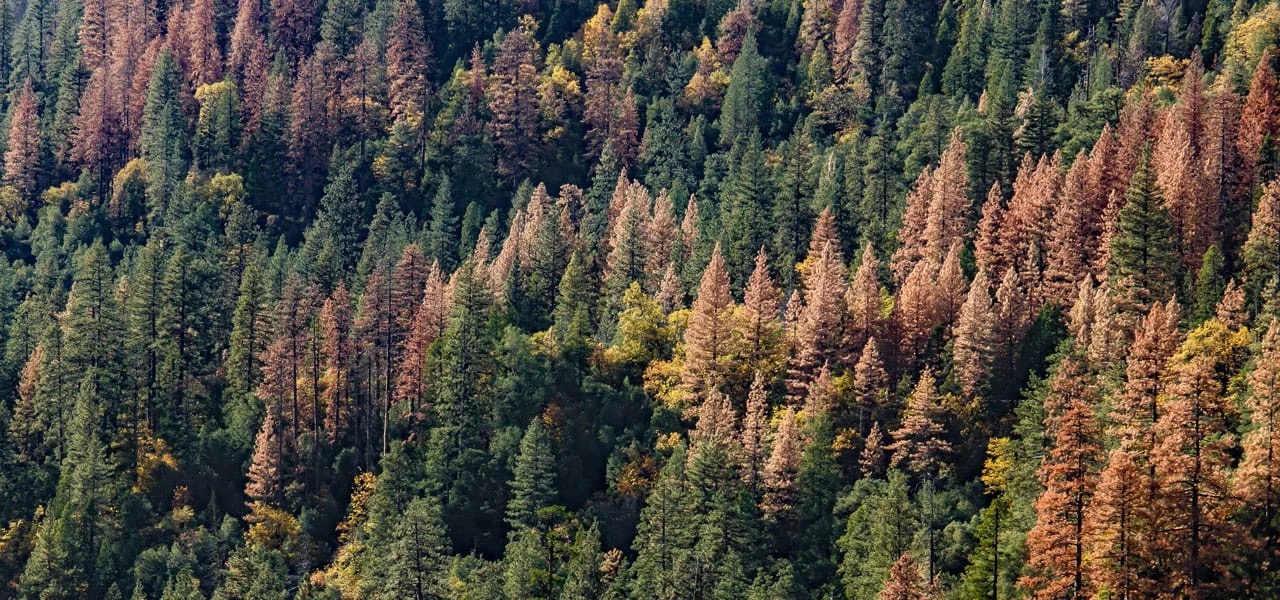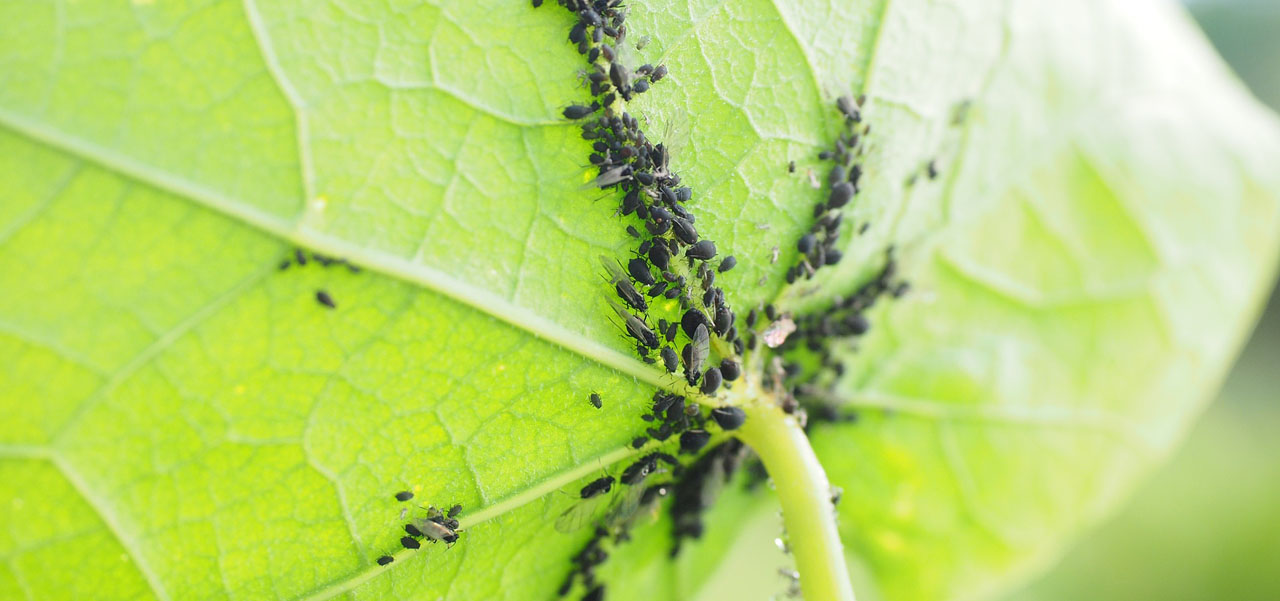While aspens are a popular tree for the mountainous areas of Colorado, they don’t often grow well on residential properties. Aspens are prone to pests and diseases and are picky about the amount of water and sun they require. They’re a multi-tree organism, rather than a single tree, so will naturally sucker and spread rapidly. Most homeowners find that their aspen trees only live for about 20 years (if a pest or disease doesn’t kill them before that).
If you love the look of aspens – especially their fall colors – but don’t want to deal with their issues, we have some alternative options for you to consider. All of these trees work well in our part of the Colorado Front Range and are usually available at local nurseries.
New Mexico Privet (Forestiera neomexicana)
Also known as a desert olive tree, New Mexico privets have a similar white bark as aspens. The bright yellow fall foliage is also like the fall colors on aspen trees. They can be grown as hedges or pruned into small trees up to 18 feet tall and 12 feet wide.
New Mexico privet tolerates different soils and does well in full or partial sun. It is drought resistant so doesn’t need as much water as other types of trees once established.
Learn more about the New Mexico Privet (and see some photos) on the Water Wise Plants section of Colorado Springs Utilities website.

Narrowleaf Cottonwood (Populus angustifolia)
Both aspens and cottonwoods are part of the Populus family so there are many similarities, including the beautiful yellow or orange fall foliage. However, the narrowleaf cottonwood grows taller than aspen trees. In our area, it’s naturally found at elevations between 5,000 and 8,000 feet.
Just like an aspen, it can send out suckers. But it tends to sucker far less and mostly just in areas where roots or part of the tree has been damaged.
Learn more about the narrowleaf cottonwood >>

Canada Red Cherry (Prunus virginiana)
Canada red cherry (or chokecherry) is a large shrub or small tree with shiny dark green leaves that turn red or purple in the fall.
In addition to its beautiful fall color, the chokecherry has fragrant white flowers in spring. It’s a mid-sized tree that can grow to 20 feet tall. It is extremely drought tolerant and can be planted in xeriscape gardens.
The Canada red cherry naturally sends out suckers to form a dense shrub. If you prefer a more tree-like shape, some pruning will be needed occasionally.
Learn more about the Canada Red Select Chokecherry >>

Serviceberry (Amelanchier spp.)
Serviceberries or apple serviceberries can also be grown as a shrub or a multi-stemmed tree. Like some of the trees described above, if you want to grow it as a tree, you’ll have to prune off some of the lower branches and keep control of the suckers.
Serviceberries have shallow roots so will benefit from a layer of organic mulch spread around the base of the plant. The berries are edible right off the tree but are also popular in jams and jellies. Serviceberries do not do well in shade, so we recommend planting them in full sun.
Recommended serviceberry cultivars include:
- Autumn Brilliance serviceberry (Amelanchier x grandifolia)– red fall leaves
- Rainbow Pillar serviceberry (Amelanchier canadensis ‘Glenform’)
- Regent serviceberry (Amelanchier canadensis ‘Regent’)
- Saskatoon serviceberry (Amelanchier alnifolia) – our native plant
- Shadblow serviceberry (Amelanchier canadensis)
- Standing ovation serviceberry (Amelanchier alnifolia ‘Obelisk’)
Learn more about serviceberries >>

Mountain Ash (Sorbus aucuparia) ‘Black Hawk’
Growing to around 30 feet high and 23 feet wide (so don’t plant it under power lines!), the ‘Black Hawk’ mountain ash has dark green leaves that turn red or yellow in the fall. It also has white, delicate spring flowers and red-orange berries. In some areas, it is referred to as a Rowan tree.
The mountain ash is a great accent tree that requires full sun and well-drained soil. The fruit not only serves as a food source for local wildlife, but the berries also last into winter to provide some interesting color for your yard. Once the fruit drops, though, it can cause a mess, so be sure to plant this tree somewhere where that won’t be an issue.
Though not a native tree, the mountain ash is well adapted to life in Colorado and should live for 50 years when well maintained.
We like the ‘Black Hawk’ cultivar because it is resistant to windburn and sunscald, which is helpful in windy areas like Evergreen. This cultivar is also more columnar than the regular variety, making it a good option for some smaller spaces.
Learn more about mountain ash trees in our spring-flowering trees article.

Gambel Oak or Scrub Oak (Quercus gambelii)
Another option that works well as either a shrub or small tree, Gambel oak has leaves that turn yellow or reddish-brown in the fall. Just like aspens, they grow from one underground root system, though they also use acorns to germinate and create a new tree.
Learn more about gambel/scrub oaks >>

Tatarian Maple (Acer tataricum)
This incredibly fast-growing tree is not native to Colorado but comes from Asia. It can grow to 20 feet tall and 25 feet wide at a rate of up to 2 feet a year. This shrub-like tree makes a statement in the fall landscape with its bright yellow or red leaves.
Like other types of maples, it has winged fruit known as samaras, which themselves can be bright pink or red. The tatarian maple does well in most kinds of soil conditions and needs partial shade or full sun. It is drought tolerant and has fragrant green to yellow flowers in the spring.
Ready to Plant a New Tree?
If, after looking at the alternatives, you still think you may prefer to plant aspen trees on your property, we have a lot of aspen resources on the Lam Tree Services website. However, we highly recommend an alternative option and hope that this article has inspired you to plant some of the other trees with great fall colors that grow in the Evergreen, Colorado area.
If you’re ready to plant a tree, here are some helpful resources from our website:
- Should you remove the wire basket or burlap before planting a tree?
- Tips to keep your newly-planted tree thriving
Still not sure what to plant? Give us a call or contact our office to talk with an Arborist.
We can plant evergreens up to 15 feet tall and deciduous trees up to 20 feet tall in most locations. Let us select and plant the right tree for the right spot in your Colorado yard this fall or spring!
Tree Planting
We recommend spring or early fall planting to get your new trees off to a great start. You can always call us for advice on where to plant your new tree(s) and don’t forget that we offer professional tree planting services if you don’t want to do it yourself!
Recommended Trees & Shrubs
Get A Free Quote
Call us at 303-674-8733 or contact us online to get a free estimate for tree planting, general tree services or any aspect of our Plant Health Care program.

























